Table of Contents:
Essential Dog Training Equipment for Every Owner
As every artist needs a palette, every dog owner requires the right dog training equipment to embark on the journey of teaching their furry friend new skills. Having the basics in place is not only beneficial but essential for clear communication, safety, and effective learning during training sessions. In this section, we'll explore the fundamental items that should be part of your basic dog training equipment list, ensuring that you are well-prepared to support your dog's educational journey.
Choosing the Right Collar for Effective Dog Training
Selecting the right collar is a decision that can significantly influence the effectiveness of your dog training routine. It's not merely about fashion or personal preference; the right collar should match your dog's size, breed, and the specific training goals you have in mind. This indispensable piece of dog training equipment provides control and security for both the dog and handler, acting as a foundation for many training exercises.
There are various types of collars available, each serving different purposes. For instance, flat collars are great for everyday use and basic obedience training, while martingale collars offer more control without the choking effect of chain collars. For those looking at advanced training or dealing with behavioural issues, head collars may be advisable, as they offer gentle yet firm guidance to influence the dog's direction.
It's important to remember that no single collar is perfect for all dogs or training situations. Owners must ensure that any collar used is correctly fitted, providing comfort and safety. Consulting a professional may be beneficial in making this crucial choice, as it can directly affect your training success.
Tools for Effective Dog Training: Advantages and Considerations
| Training Equipment | Advantages | Considerations |
|---|---|---|
| Clicker | Clear and consistent signal for behaviour marking. Enhances positive reinforcement training. | Requires timely and precise use to be effective. Need to carry it constantly during training. |
| Training Collar | Useful for managing pulling on leash and for advanced training. Many types available for different training needs. | Potential for misuse leading to discomfort or injury. Important to choose the right type and use it correctly. |
| Treats | Effective motivator and reward during training sessions. Helps to build a strong bond between the dog and the trainer. | Overuse may lead to obesity. It is crucial to find a healthy balance and use high-quality treats. |
| Training Harness | Provides better control without straining the dog's neck. Useful for puppies and dogs being trained not to pull. | Dog may require time to acclimatise to the harness. Choosing the right size and fit is essential. |
| Long Line | Allows for greater freedom during recall training while still maintaining control. Can be used in varied locations. | Can become tangled if not managed properly. Requires vigilance to ensure safety. |
Harnesses vs Collars: What's Best for Your Dog's Training?
The debate between using harnesses and collars is ongoing in the dog training world. The right choice depends on various factors, such as your dog's anatomy, behaviour, and the type of training you intend to do. Harnesses distribute pressure more evenly around your dog's body, which can be helpful for dogs with respiratory issues or those prone to pulling. Conversely, collars may offer more control over your dog's head movement, crucial for certain training scenarios.
When considering harnesses, owners should be aware of the different styles available. Some are designed for no-pull training, which can be particularly useful for teaching your dog proper leash manners. Others offer support and comfort for dogs in working roles or those engaging in high activity levels.
Understanding the difference between a harness and a collar, and the advantages of each, is vital for choosing the appropriate dog training equipment for your companion. In some cases, alternating between a harness and collar might be the most effective approach, allowing for flexibility in training methods and scenarios.
The Role of Leashes in Dog Training Success
In the realm of dog training, leashes serve as a crucial link between the owner and their dog. The leash is a fundamental tool for ensuring control and providing guidance during training exercises. It's not just about keeping your dog close; a leash can also be an essential communication device that helps to reinforce commands and correct behaviour.
The choice of leash can have a notable impact on the training experience. A standard leash is suitable for basic training and everyday walks, while a long line allows for safe recall practice and freedom of movement in open areas. For specific training needs, such as agility or tracking, specialized leashes may offer enhanced functionality and support.
It's important to consider both the material and length of the leash. Materials such as nylon, leather, or rope each have different feels and durability, while the length of the leash dictates the range of motion your dog has, which can be adjusted according to the training situation. Additionally, ensuring that the leash is comfortable for the handler is just as essential, as it is an extension of one's training intent.
Training Clickers: A Simple Tool for Positive Reinforcement
Training clickers, though simple in design, are remarkably effective for applying positive reinforcement techniques in dog training. This small hand-held device emits a distinct clicking sound that, when used consistently, helps your dog understand exactly which behaviour is being rewarded. The clear, consistent sound of a clicker cuts through distractions and allows for precise timing in acknowledging desired behaviours.
Integrating a clicker into training sessions can accelerate the learning process. The immediate feedback provided by a click reinforces the correct action in your dog's mind, making it easier for them to repeat it in the future. Furthermore, clicker training promotes a bond of trust and understanding, as it relies on rewards rather than punishment.
An effective clicker training routine involves timing, consistency, and patience. It's crucial that the click is followed by a reward, such as a treat or verbal praise, to solidify the positive association. With practice, a dog can learn to respond to the clicker alone, knowing it has performed the correct action and a reward is forthcoming.
The Importance of Treat Bags in Reward-Based Training
In the practice of reward-based training, treat bags have become an indispensable accessory for dog trainers and owners alike. A treat pouch worn around the waist enables immediate access to rewards, facilitating timely positive reinforcement that is crucial for effective learning. The utility of a treat bag lies in its convenience, keeping your hands free and rewards readily on hand during training sessions.
Effective training hinges on the ability to offer treats promptly after a desired behaviour is exhibited, thereby establishing a strong link between the action and the reward. With a treat bag, there's no fumbling or delay, which helps maintain your dog's focus and prevents distraction. This promotes faster learning and stronger retention of new skills.
Furthermore, treat bags also help maintain organisation during training. They can hold not only treats but also other small training tools like clickers, whistles, and poop bags. For any trainer who values efficiency and effectiveness, a good-quality treat bag is an asset to their dog training equipment.
Using Training Mats for Focus and Boundaries
Training mats are an often overlooked yet essential piece of dog training equipment. A mat serves as a defined space where your dog can learn to settle and focus, away from distractions. This tool is especially useful in teaching your dog the boundaries within a home or a public space, and in situations where calm behaviour is required.
The use of a mat can be highly effective in training dogs to understand their own 'place' during mealtimes, when guests visit, or even in busy outdoor environments. By associating the mat with positive experiences like treats and relaxation, dogs are encouraged to remain on the mat calmly, which can also reduce anxiety and improve behaviour.
Additionally, training mats are portable, allowing for consistency in training across different locations. The familiarity of the mat can provide a sense of security for the dog, aiding in smoother transitions and better focus in unfamiliar environments. For any owner seeking to create well-defined spaces for their dog, training mats are a versatile and valuable training aid.
Interactive Toys: Combining Play and Training
Interactive toys play a dual role in a dog's life by merging playtime with training opportunities. These engaging items not only provide mental and physical stimulation but can also enhance training sessions by reinforcing desired behaviours through play.
One example is a treat-dispensing toy, which rewards problem-solving with a snack, thereby positively reinforcing cognitive effort. Another is a tug toy, which can teach impulse control and strengthen the canine-human bond when used correctly during play. Interactive toys are designed to challenge a dog's thinking and adaptability, crucial elements in a well-rounded training regimen.
Ultimately, the incorporation of interactive toys into training routines transforms learning into a more enjoyable experience. They serve as motivational tools that make achieving training goals fun, offering a break from more structured exercises while still promoting learning and growth in your dog.
Safety Gear for Training: Muzzles and Protective Equipment
In certain training scenarios, safety gear such as muzzles and protective equipment becomes vital. These items ensure the well-being of both the dog and the trainer during the training process. A correctly fitted muzzle can be an important tool, particularly in situations where a dog may react unpredictably or when introducing them to new and potentially stressful environments.
Protective gear for the trainer, such as gloves and arm guards, are essential precautions when working with dogs that have a history of aggressive behavior or are learning bite inhibition. Such equipment can prevent injuries and provide trainers with the confidence needed to handle various training exercises safely and effectively.
It's important to view these safety tools as part of a responsible training approach rather than as punishment for the dog. Implementing them with care and proper conditioning can help prevent fear or discomfort, ensuring a positive training environment where both the dog and the human can feel secure.
E-Collars: Understanding Their Use in Dog Training
E-collars, or electronic collars, are a type of dog training equipment that can be used to reinforce commands at a distance through the use of mild electrical stimulation. It is crucial to understand the ethical considerations and correct usage of e-collars to ensure they are used humanely and effectively.
Proper use of e-collars involves setting them to the lowest effective level of stimulation, often described as a gentle tickle or tap sensation. The goal is to gain the dog's attention, not to cause discomfort or pain. Trainers must be trained to use e-collars responsibly to avoid misuse and anxiety in dogs.
When applied with care, e-collars can be part of a balanced training program, especially in situations where other forms of communication are limited, such as in field or off-leash scenarios. Nonetheless, they should not replace positive reinforcement techniques and should only be used under the guidance of a professional trainer who understands their complexities and subtleties.
Customising Your Dog Training Equipment List for Specific Goals
Creating a tailored dog training equipment list catered to your specific goals can make a significant difference in the outcome of your training sessions. By identifying the precise objectives you wish to achieve with your dog, you can select tools that will support those goals effectively.
For instance, if enhancing obedience is the target, items like a consistent leash, a firm collar, and a variety of treats for rewards might be prioritized. Alternatively, for agility training, cones, hurdles, and tunnels would be more relevant. Customization also extends to the breed and temperament of your dog – some breeds may benefit more from certain types of equipment than others.
Assessing your dog's individual needs, alongside your training ambitions, is key to assembling an optimal set of tools. It might be beneficial to consult with a professional trainer to help construct your list, ensuring that it includes all necessary items without superfluous additions. This thoughtful approach leads to a focused and comprehensive toolkit, streamlining the path towards your training goals.
Maintaining Your Dog Training Equipment for Longevity
Proper care and maintenance of your dog training equipment are indispensable for ensuring their longevity and performance. Regular upkeep not only extends the life of the equipment but also ensures safety during training sessions.
Cleaning your gear, such as leashes and collars, according to the manufacturer's instructions is important for hygiene and to prevent wear and tear. Inspecting items like harnesses and muzzles for signs of damage can prevent them from failing during use. For electronic devices such as e-collars, keeping them charged and storing them according to guidelines will ensure they are ready when needed.
Indeed, the durability and functionality of training equipment can be greatly enhanced through simple yet consistent care routines. Taking the time to maintain your equipment can prevent unexpected costs and contribute to a more productive training experience for both you and your dog.
Where to Find Quality Dog Training Equipment
Finding quality dog training equipment is crucial for ensuring that your training efforts are both safe and successful. High-quality gear can make a noticeable difference in the training experience for you and your dog, providing reliable performance and durability.
Several sources can provide excellent training equipment. Specialty pet stores often have a wide array of tools suited for a variety of training needs, from basic obedience to more advanced work. Online retailers also offer extensive selections where you can read customer reviews and compare products conveniently.
Furthermore, recommendations from professional dog trainers or breed-specific clubs can guide you towards reputable brands and products that have been tested in the field. Remember to look for equipment that comes with warranties or guarantees, as this can be an indicator of quality and the manufacturer's confidence in their product.
Understanding the Different Types of Dog Training Equipment
Comprehending the variety of dog training equipment available is key to selecting the right tools for your dog. Each type serves a unique purpose, tailored to different aspects of training, from behavioural modification to skill development and safety.
For instance, leashes come in various lengths and materials for different training environments, while collars are intended for control and communication. Harnesses provide an alternative to collars, offering different points of control and pressure distribution. Clickers and treats facilitate reward-based training, and toys can make learning engaging and enjoyable for your dog.
Safety equipment, including muzzles and protective gear, ensure that training proceeds without risk of injury. Advanced tools such as e-collars, when used responsibly, can enhance communication over distances. By understanding the functions of each piece of equipment, you can make informed choices that align with your training goals and ethical considerations.
Dog Training Equipment for Professional Trainers and Handlers
Professional dog trainers and handlers often require specialised dog training equipment to meet the high demands of their work. These experts need tools that can withstand rigorous use and offer the precision necessary for advanced training techniques.
Such equipment may include durable long lines and leashes for fieldwork, advanced e-collars with various stimulation levels for nuanced communication, and protective sleeves and suits for bite training. Professional-grade treat bags that allow easy access and organization are also essential for reinforcing positive behaviour during intensive sessions.
Accessibility to equipment that is both operational and resistant to wear and tear is paramount for professionals. This ensures consistency in training which is vital for dogs learning complex tasks, whether that be in service work, search and rescue, or competitive sports. High-quality, reliable equipment supports the profound commitment of professional trainers and handlers in developing well-trained dogs.
Dog Training Essentials: Top 5 FAQs
What basic dog training equipment do I need to start training my dog?
To begin training your dog effectively, you should consider acquiring a reliable leash and collar, a variety of treats for positive reinforcement, a sturdy treat bag, training clickers for behaviour marking, and appropriate safety gear such as muzzles if necessary. These items create a solid foundation for a variety of training routines and help to establish clear communication with your dog.
How do I choose the right collar for dog training?
Select a collar based on your dog's size, breed, and the specific training objectives you have in mind. Flat collars are suited for basic obedience training, martingale collars provide controlled correction without choking, and head collars are useful for dogs that need guidance to follow direction. Always ensure the collar is comfortable and correctly fitted to your dog's neck.
When should I use a training harness instead of a collar?
A training harness is recommended if your dog has respiratory issues, a tendency to pull, or requires an even distribution of pressure during training. Harnesses can also be beneficial for puppies and specific training techniques like no-pull training, ensuring your dog's comfort and safety.
Are e-collars safe and necessary for dog training?
E-collars can be a safe training tool when used properly under the guidance of a professional. They should deliver a low level of stimulation for communication, not punishment. E-collars are not always necessary but can be useful in certain conditions, like field training or off-leash control, where traditional methods are limited.
What role do interactive toys play in dog training?
Interactive toys are excellent for combining play with training. They provide mental stimulation and can be used to reinforce positive behaviours through interactive play. For example, treat-dispensing toys encourage problem-solving skills, while tug toys can be used to teach impulse control and strengthen the bond between the dog and the trainer.



